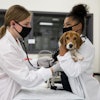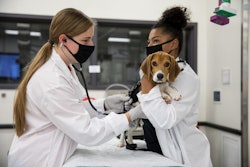The nation’s current economic problems show that it is more important than ever to increase the participation of minority-group members and women in technical fields if the country is to maintain the scientific leadership that has driven prosperity for decades, experts say.
Even in a near-stagnant economy, job opportunities abound for those careers focused on science, technology, engineering and mathematics, fields collectively known as STEM. Fewer Americans are training for these jobs, which increasingly are going to those who were born in other countries and educated here.
According to the U.S. Bureau of Labor Statistics, STEM fields are expected to add 2.7 million new jobs by 2018, an enormous prospect for those who are prepared and a huge missed opportunity for those who are not. The need to improve STEM education in the U.S. became a priority for government, business and academe following the release in 2005 of a congressionally mandated report, “Rising above the Gathering Storm.” The study by the National Academy of Sciences predicted an erosion of U.S. scientific and technical leadership and economic influence unless the country improved and expanded STEM education for its citizens.
In a follow-up report released in 2010, the academy and its companion National Academy of Engineering and Institute of Medicine said underrepresented minority people represent a largely untapped pool of American talent that could help fill the coming wave of STEM jobs. Of college-educated Americans, people of racial and ethnic minorities—including African-, Hispanic and Native Americans—represented only 9 percent of those in science and engineering occupations in 2006, a figure that would need to triple to match the share of minorities in the U.S. population, the report said. (Asians are considered well represented in the sciences, based on their proportion of the general population.)
After years of probing for the right solutions, experts say efforts to increase the representation of minorities in scientific and technical fields are starting to zero in on programs that could be tried on a larger scale.
Opportunity for Disabled
Students with disabilities are one minority group targeted for inclusion in STEM programs. The National Science Foundation has been sponsoring programs since 1994 to include people with disabilities in STEM-associated professional careers. According to 2008 agency figures, those with disabilities represented slightly more than 10 percent of undergraduate students majoring in engineering, mathematics, and computer and physical science. In graduate studies, they made up about 6 percent of students in those fields and 9 percent studying social and behavioral sciences.















